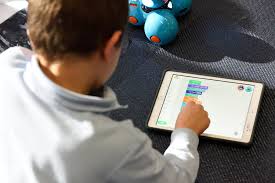What should a 3rd grader know in grammar?
3rd Grade Grammar: Key Skills and Worksheets
- Parts of Speech and Their Functions.
- Regular and Irregular Plural Nouns.
- Abstract Nouns.
- Regular and Irregular Verbs.
- Simple Verb Tenses.
- Subject-Verb Agreement.
- Pronoun-Antecedent Agreement.
- Comparatives and Superlatives.
What games do you play grammar?
Play fun online grammar games for FREE! Reading Eggs and Reading Eggspress make learning grammar, vocabulary, and comprehension skills fun for young kids.
5 Fun Grammar Games for Kids
- Sentence building game.
- Spot the mistakes.
- Play the Simon Says of grammar.
- Cap‑ital letters.
- Present and past tense matching game.
What games do third graders play?
30 Third Grade Math Games and Activities That Really Keep Kids Engaged
- Count your dots to learn multiplication.
- Punch holes for multiplication.
- Visit the Multiplication Shop.
- Flip dominoes and multiply.
- Make multiplication pool noodles.
- Search for the multiplication equations.
- Repurpose a Guess Who? board.
How can 3rd graders make learning fun?
Make Learning Fun for Your 3rd Grader
- Give your child a new board game. Choose an age-appropriate one that taps your child’s interests — whether she’s passionate about princesses, horses, baseball, or outer space.
- Play cards. Teach your child some of your childhood favorites.
- Head outside for active learning fun.
What should a 3rd grader know in grammar? – Additional Questions
What activities do 3rd graders like?
Fun learning games and activities for 3rd graders
- Crazy captions. This simple but fun activity builds reading and writing skills.
- Microscope discovery.
- Create a scroll.
- Play a matching game.
- Writing letters.
- Power reading talk.
- Water glass music.
- Family fitness.
How do you engage in 3rd grade?
10 Rules of Engagement
- Start Class with a Mind Warm-Up.
- Use Movement to Get Kids Focused.
- Teach Students How to Collaborate Before Expecting Success.
- Use Quickwrites When You Want Quiet Time and Student Reflection.
- Run a Tight Ship When Giving Instructions.
- Use a Fairness Cup to Keep Students Thinking.
How can you make learning fun for the students?
Here are 10 ways you can make learning and education more exciting for your students.
- Break up Your Lessons.
- Give Your Students Choices.
- Incorporate Games.
- Create Group Time.
- Get up and Move.
- Incorporate Hands-On Learning.
- Be Open to Creativity.
- Schedule Field Trips.
How can I make teaching more fun?
Teaching Strategies to Make Your Class More Fun
- Incorporate Mystery Into Your Lessons.
- Don’t Repeat Classroom Material.
- Create Classroom Games.
- Give Your Students Choices.
- Use Technology.
- Don’t Take Teaching so Seriously.
- Make Your Lessons Interactive.
- Relate Material to Your Students’ Lives.
How can I make my 7 year old learn fun?
Fun learning activities for 7-year-olds
- Language games.
- Phonic games.
- Memory games.
- Listening games.
- Action games.
- Tactile games.
- Screen games.
- Car journey games.
How do you get students excited about learning?
Here are five common steps to get your students excited about learning:
- Encourage Students.
- Get Them Involved.
- Offer Incentives.
- Get Creative.
- Draw Connections to Real Life.
- Sponsored Online Programs.
How do you teach weak students?
Make a proper timetable for the weak student.
Whatever the condition and situation of the student may be, follow these magic tips for bringing out the best from the weak students:
- Keep and maintain eye contact.
- Make use of manipulatives.
- Be patient.
- Be understanding.
- Update the parents with the latest information.
How do you motivate a lazy student?
11 (more) tips to encourage unmotivated students
- Better student self talk.
- Stay motivated yourself.
- Work to your students’ interests.
- Change layout regularly.
- Know what to say.
- Provide a “why”
- Encourage goal-setting.
- Be clear with instructions.
How do you motivate weak students?
Plan for every class; never try to wing it. Pay attention to the strengths and limitations of each of your students. Reward their strengths and strengthen their weaknesses. If possible, set your room in a U-shape to encourage interaction among students.
What a teacher should not do in class?
25 Things Teachers Shouldn’t Do in the Classroom
- Yelling – No students like yelling at them.
- Short temper – It is just not fine if the role model lose temper in front of the students.
- Unprepared for class – Coming unprepared for class is the loss of valuable teaching time.
How can a teacher handle a slow learner?
Teaching strategies to help slow learners.
Providing students with a quiet place to work to reduce distractions. Give genuine praise frequently by emphasising their strengths and giving positive feedbacks. Developing short lessons by limiting the working time to several short work periods rather than one long one.
How a weak student become intelligent?
Weak students must participate in co-curricular activities as these activities make the students develop a bond with other classmates and also channelizes their energies in the right direction. These activities also enable students to put their brains to work and make them smarter and sharper.
How do you cater a slow learner?
How to work with slow learners?
- Reduce distractions by providing a quiet, private place to work.
- Emphasize strengths. Use lots of praise and reinforcement frequently.
- Make lessons short. Limit working time.
- Add variety to the academic routine.
- Work on material that is somewhat challenging but allows success.
What do we call weak students?
feeble, feeble-minded, indecisive, infirm, irresolute, namby-pamby, soft, spineless, weak-kneed (informal) weak-minded, wimpish (informal)
How do you get an A+ in every class?
The 21 Secrets of A+ Students
- Know your learning style.
- Color code your notes.
- Start assignments immediately.
- Follow the instructions.
- Break tasks down into manageable chunks.
- Use technology to help you focus.
- Find an environment with few distractions.
- Study smart not hard.
How do you get an A?
10 Steps to Help You Get Straight A’s
- STEP 1: Take the right subjects …and school will be a lot easier!
- STEP 2: Work with your teacher …
- STEP 3: Never miss a class …it will always catch up with you!
- STEP 4: Always sit up front …
- STEP 5: Complete your homework before class …so you will be prepared in class!
Is there such thing as an A ++?
A++ is a language similar to C++, with its interpreter available in Scheme, Java, C, C++ and Python, and offers an ideal environment for basic training in programming, enforcing rigorous confrontation with the essentials of programming languages.




